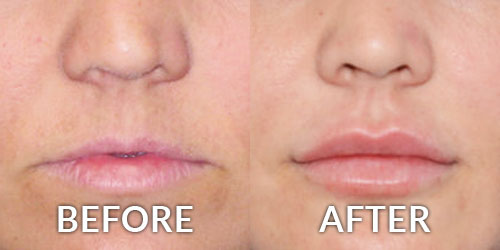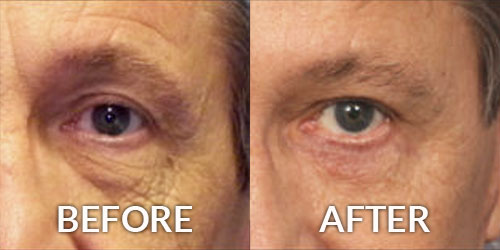Cysts
Consultations offered at our two convenient locations in Phoenix and Scottsdale
Cysts are pockets of membranous tissue filled with fluid or tissue debris that form just beneath the skin. These raised bumps can be caused by many different factors including genetics, injuries, infections, or inflammation. As a result, cysts are common and can develop nearly anywhere on the body. There are many different kinds of cysts and degrees of severity. Most cysts are painless and benign. However, they can be a troublesome abnormality and require intervention to be safely removed. The dermatological experts at Phoenix Skin have the experience to accurately diagnose and effectively treat bothersome and unsightly cysts. We use sophisticated, minimally invasive treatments that will restore your confidence and leave you with beautiful results. To schedule an initial consultation, fill out this online contact form or give our Phoenix offices a call at (602) 222-9111, or our Scottsdale offices at (480) 473-9111.
Contents
Different Types of Cysts
Our skin is a complex organ and is, in fact, our and largest organ![1] It is a constantly growing protective barrier but it also has millions of tiny openings that leave it vulnerable to a wide variety of complications. Cysts are just one complication. Most cysts are benign and painless. As with any skin irregularity, if a cyst becomes painful or irritated, it is best to have a dermatologist examine it.[3] There are several different kinds of commonly occurring cysts.
Epidermal Inclusion Cysts
Approximately every 27 days, older skin cells are replaced with newer, fresher cells. The old cells migrate to the top layer of our skin as newer cells replenish the deeper layers of our dermis. Keratin, an essential protein in the creation of skin cells, provides structural resilience to the cells as they move towards the outermost layer of our skin.[2] Epidermal inclusion cysts occur as a result of disruptions to this ongoing process. When the opening of a hair follicle becomes blocked by a keratin-producing cell, a cyst forms. Keratin continues to be produced within the blockage, and the cyst gradually expands.
While they can occur on any part of the body, they predominantly appear on the face, neck, upper back, chest, and pelvic area.
Cystic Acne
We’ve all had a pimple. During puberty, high androgen production levels stimulate the sebaceous glands to increase sebum production.[4] Sebum is made of oil, wax, and fat, and is what keeps our skin and hair healthy. Too much sebum can block the pore. As bacteria feeds off of the sebum within the pore, a pimple forms. In mild acne, this happens in the very outer layer of skin. Cystic acne is the most severe form of acne. When the infection grows, the body reacts with an influx of white blood cells. The follicle then ruptures, leading to a painful, pus-filled cyst that stretches deep into the dermis.
Personal Consultation
To begin the process of identifying and treating your cyst, please fill out this online form to schedule a personal consultation. If this is your first time with us, we will begin with a new patient intake interview and a physical examination of your cyst. The size, location, and type of cyst will guide possible treatment options. We will also note if this is a recurring problem. Frequent cysts can occur as a result of an underlying condition, lifestyle choices, or genetics. This information will help us determine which treatment option is best for long-term results.
We may inquire about additional dermatologic concerns you may have. Many of our clients also have cosmetic concerns that can be addressed with the many services we provide. Phoenix Skin offers a wide range of cosmetic procedures to help you look and feel your best. Be sure to mention other cosmetic dilemmas in your consultation.
Treatment Options
During your consultation, we will decide on a proper treatment route for addressing your cyst. We will work with you to formulate a comprehensive treatment plan to achieve your desired results.
Injections
Many cysts can be treated with simple injections. To treat cystic acne and other inflamed cysts, we use corticosteroid injections. When we inject the cyst, the steroid acts as an anti-inflammatory that reduces inflammation and the size of the cyst.[6] In addition to corticosteroid injections, we may also utilize other treatment options such as microdermabrasion, gentle glycolic peeling, LED light therapy, and a personalized acne treatment regimen to fight breakouts and help you achieve a smooth, clear complexion.
Cyst Removal
Other kinds of cysts must be removed entirely. We begin by administering a local anesthetic to the cyst to numb the area. Next, we make a small incision at the cyst surface. To remove large epidermal cysts, we may choose to excise tissue using elliptical incisions or performing a punch incision. We then carefully apply pressure to gently squeeze the mass out of the opening. Epidermal inclusion cysts contain accumulations of keratin cells, forming a substantial mass. We will remove the cyst contents and, if necessary, remove the cyst sac. This ensures that no leftover debris remains. If remnants of the cyst linger in the area, those cells can multiply and grow an entirely new cyst! Lastly, we will suture the incision closed and supply you with proper aftercare instructions.
Recovery & Results
Depending on the treatment we elect for your cyst, we will give you a comprehensive aftercare guide for proper recovery.
How Much Does Cyst Treatment Cost in Phoenix?
The price of your treatment will vary depending on which approach is used. We will discuss and determine the cost of your care during your consultation. If you have any questions, please don’t hesitate to call us at our Phoenix offices at (602) 222-9111 or our Scottsdale offices at (480) 473-9111. If you are interested in our financing options, visit our financing page. Visit our specials page to be on the lookout for our latest monthly specials!
References
- InformedHealth.org [Internet]. Cologne, Germany: Institute for Quality and Efficiency in Health Care (IQWiG); 2006-. How does skin work? 2009 Sep 28 [Updated 2019 Apr 11]. Available from: https://www.ncbi.nlm.nih.gov/books/NBK279255/
- (2018). Keratins in Skin Epidermal Development and Diseases. In (Ed.), Keratin. IntechOpen. https://doi.org/10.5772/intechopen.79050
- Zito PM, Scharf R. Epidermoid Cyst. [Updated 2021 Nov 15]. In: StatPearls [Internet]. Treasure Island (FL): StatPearls Publishing; 2022 Jan-. Available from: https://www.ncbi.nlm.nih.gov/books/NBK499974/
- Hoover E, Aslam S, Krishnamurthy K. Physiology, Sebaceous Glands. [Updated 2021 Oct 14]. In: StatPearls [Internet]. Treasure Island (FL): StatPearls Publishing; 2022 Jan-. Available from: https://www.ncbi.nlm.nih.gov/books/NBK499819/
- Nixon AT, Garza RF. Pilonidal Cyst And Sinus. [Updated 2021 Aug 11]. In: StatPearls [Internet]. Treasure Island (FL): StatPearls Publishing; 2022 Jan-. Available from: https://www.ncbi.nlm.nih.gov/books/NBK557770/
- Kraft, J., & Freiman, A. (2011). Management of acne. CMAJ : Canadian Medical Association journal = journal de l’Association medicale canadienne, 183(7), E430–E435. https://doi.org/10.1503/cmaj.090374







